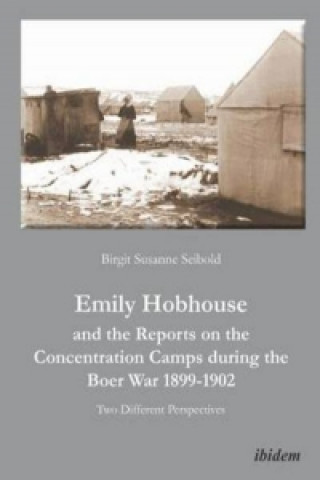
Code: 01366242
Emily Hobhouse and the Reports on the Concentrat - Two Different Perspectives
by Birgit Susanne Seibold
The black spot the one very black spot in the picture is the frightful mortality in the Concentration Camps. I entirely agree with you in thinking, that while a hundred explanations may be offered and a hundred excuses made, they ... more
- Language:
 English
English - Binding: Paperback
- Number of pages: 166
Publisher: ibidem-Verlag, Jessica Haunschild u Christian Schon, 2011
- More about this

30.32 €
RRP: 31.84 €
You save 1.52 €

In stock at our supplier
Shipping in 6 - 8 days
You might also like
-

Oxford Read and Discover Caring for Our Planet
15.15 € -

Child of the Moon
15.05 € -17 % -
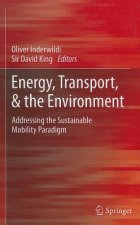
Energy, Transport, & the Environment
241.01 € -

Iconic
23.14 € -18 % -

Advances in Computational Science, Engineering and Information Technology
241.01 € -

GALE CONTEXTUAL ENCYCLOPEDIA OF WORLD LI
530.96 € -65 % -

Hayling Island
17.88 € -10 %
Give this book as a present today
- Order book and choose Gift Order.
- We will send you book gift voucher at once. You can give it out to anyone.
- Book will be send to donee, nothing more to care about.
More about Emily Hobhouse and the Reports on the Concentrat - Two Different Perspectives
You get 76 loyalty points
 Book synopsis
Book synopsis
The black spot the one very black spot in the picture is the frightful mortality in the Concentration Camps. I entirely agree with you in thinking, that while a hundred explanations may be offered and a hundred excuses made, they do not really amount to any adequate defence. I should much prefer to say at once, so far as the Civil authorities are concerned, that we were suddenly confronted with a problem not of our making, with which it was beyond our power properly to grapple. And no doubt its vastness was not realised soon enough. It was not till six weeks or two months ago that it dawned on me personally, (I cannot speak for others), that the enormous mortality was not merely incidental to the first formation of the camps and the sudden inrush of thousands of people already sick and starving, but was going to continue. The fact that it continues, is no doubt a condemnation of the Camp system. The whole thing, I think now, has been a mistake.§Alfred Milner to Joseph Chamberlain, December 7th, 1901§The British scorched earth policy during the last phase of the Anglo-Boer War of 1899-1902 led to the burning of farms, the destruction of homesteads, harvests and livestock and to the internment of the civil population in the so-called concentration camps. There, people - mainly women and children - died of malnutrition and diseases such as measles, pneumonia and typhoid. The death rate in the camps was so high - nearly 28,000 white Boers succumbed - that the English population, renowned for its gallantry and chivalry, was consternated. Lloyd George blamed his government for its policy of extermination, Campbell-Bannerman spoke of methods of barbarism, and philanthropic institutions protested, led by Emily Hobhouse, who was the first civilian to investigate the conditions of the camps. The government reacted and sent a ladies' commission under the leadership of Millicent Garrett Fawcett to South Africa.§Birgit Seibold's study is the first to compare the 'inofficial' and the official report on the camps and to give an insight into conditions in each of the thirty-three white concentration camps. Based on first-hand research among the Hobhouse manuscripts, this book is both scholarly and compulsively readable.
 Book details
Book details
30.32 €
- Full title: Emily Hobhouse and the Reports on the Concentrat - Two Different Perspectives
- Author: Birgit Susanne Seibold
- Language:
 English
English - Binding: Paperback
- Number of pages: 166
- EAN: 9783838203201
- ISBN: 3838203208
- ID: 01366242
- Publisher: ibidem-Verlag, Jessica Haunschild u Christian Schon
- Weight: 230 g
- Dimensions: 210 × 150 × 9 mm
- Date of publishing: 01. November 2011
Trending among others
-

Gravity Falls Journal 3
18.39 € -14 % -

Berserk Deluxe Volume 1
44.37 € -12 % -

Berserk Deluxe Volume 2
52.26 € -

White Nights
3.53 € -23 % -

It ends with us
8.68 € -27 % -

Berserk Deluxe Volume 3
48.82 € -3 % -

48 Laws Of Power
18.09 € -9 % -

A Little Life
17.48 € -

Surrounded by Idiots
10.71 € -10 % -

Berserk Deluxe Volume 4
46.50 € -7 % -

The Official Stardew Valley Cookbook
22.33 € -22 % -

The 48 Laws of Power
24.56 € -5 % -

Atomic Habits
15.96 € -14 % -

Iron Flame
16.27 € -18 % -

Jujutsu Kaisen, Vol. 23
10.71 € -18 % -

Berserk Deluxe Volume 5
50.44 € -

Powerless
11.92 € -7 % -

Reckless
10.30 € -20 % -

A Good Girl's Guide to Murder
8.18 € -14 % -

It Starts with Us
9.09 € -29 % -

A Curse For True Love
11.72 € -1 % -

Twisted Hate
10.71 € -17 % -

The Husky and His White Cat Shizun: Erha He Ta de Bai Mao Shizun (Novel) Vol. 6
16.17 € -19 % -
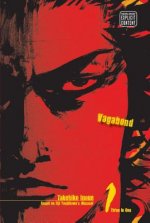
Vagabond (VIZBIG Edition), Vol. 1
24.56 € -

Court of Thorns and Roses Paperback Box Set (5 books)
50.03 € -20 % -

Everything I Know About Love
9.80 € -31 % -

Twisted Love
9.80 € -17 % -

Berserk Deluxe Volume 6
51.15 € -

Fourth Wing
10.30 € -28 % -

Twisted Lies
9.80 € -17 % -

Court of Mist and Fury
9.39 € -18 % -
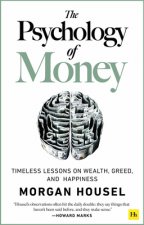
Psychology of Money
18.90 € -4 % -
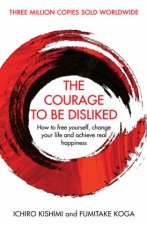
The Courage To Be Disliked
11.01 € -14 % -

Twisted Games
9.80 € -17 % -

A Court of Wings and Ruin
9.09 € -21 % -

A Court of Silver Flames
10.10 € -15 % -

Meow
20.82 € -

The Ballad of Never After
10.10 € -21 % -

Berserk Deluxe Volume 7
48.01 € -4 % -

Jujutsu Kaisen, Vol. 1
11.41 € -4 % -
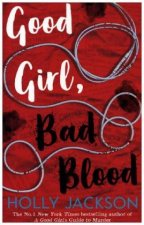
Good Girl, Bad Blood
8.58 € -20 % -

Guardian: Zhen Hun (Novel) Vol. 3 (Special Edition)
24.05 € -19 % -

Heaven Official's Blessing: Tian Guan Ci Fu (Novel) Vol. 1
18.09 € -14 % -
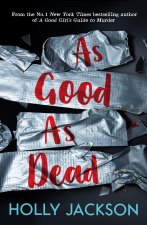
As Good As Dead
9.09 € -16 % -

Once Upon A Broken Heart
9.90 € -23 % -

Secret History
9.80 € -24 % -

House of Leaves
23.14 € -22 % -

Heaven Official's Blessing: Tian Guan Ci Fu Vol. 4
18.69 € -7 % -

No Longer Human
13.44 € -16 %
Collection points Bratislava a 2642 dalších
Copyright ©2008-24 najlacnejsie-knihy.sk All rights reservedPrivacyCookies


 15549 collection points
15549 collection points Delivery 2.99 €
Delivery 2.99 € 02/210 210 99 (8-15.30h)
02/210 210 99 (8-15.30h)